Section II - Performance Tests, Synthetic
In this section of testing we cover the synthetics. These are tests that run a scripted sequence of internal APIs or that use another installed application to perform a series of scripted events. They are great in that they can provide reproducible results across various platforms. On the down side, synthetic tests can be fooled with driver tweaks and optimizations. In some cases it is necessary to rename the .exe file to something generic to discover if this is the case. In any event when this is needed (when a test shows a drastic difference in performance over the renamed exe) we will note this and show both results for comparison.
PCMark7 -
PCMark7 is the latest general performance test from FutureMark. As each generation of this benchmark has evolved and developed we have watched them add more and more realistic tests to this suite. With this generation we find more media tests, (audio and video transcoding) moving of large files, multiple web page rendering, and much more (the even added DX10 gaming). We use the Overall Performance and Common Usage suites in our testing.
This is sort of funny when you look at the chart here. The Maximus IV Extreme and the P67 Sabertooth ended up in a tie for first place (as far as PCMarks go). The individual scores break down a little, but still it shows that the MIVE can keep up for general computing. Of course with the 5GHz OC we were not surprised to see it sneak past the Sabertooth. 
3DMark 11 -
3DMark 11 is the other Futuremark test that we run on our motherboards. This test simulates the typical tasks that a GPU (and system) would have to perform to provide you with a good gaming experience. It is based on the DX9, DX10 and DX11 engines but can only be installed on Windows Vista or later. The suite of tests covers DX9, DX10, and of course DX11 rendering; it also covers AI computations and physics. That’s right I said Physics the latest version of 3DMark uses a Havok physics engine. This removes the advantage that nVidia had with 3DMark Vantage. 
For 3DMark performance the Maximus sneaks out in front for our stock performance run. It is not much of a lead here and while it does allow us to call a “winner” all it really does is show that the Maximus IV Extreme can handle the tasks that come with gaming. In our overclocked testing the MIVE drops a little, we are sure this is more about memory than anything else. The Z68A-GD80 had some solid memory numbers that are coming into play here. If we can get the memory speeds stable at over 1600 MHz (at 5GHZ CPU clock) we are confident these numbers would be different for the OC tests… but then again that is overclocking results will vary.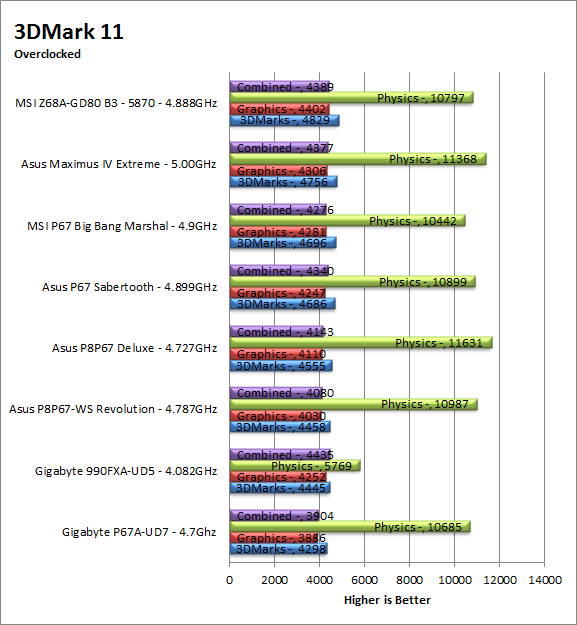
HyperPi 0.99b -
HyperPi is a front end application that allows you to easily run multiple instances of the SuperPi application. SuperPi, for those that are not familiar with it, is an application that measures the time it takes to calculate the number Pi out to as many as 32 million places. This calculation is then checked and run multiple times (up to 24 for a 32M run). This test stresses the CPU, Memory and HDD as data is handed off between the three. If there is a weak link, HyperPi will show it. For our testing we run the 32M test on as many cores (and threads) as the CPU has available. The slowest CPU time is then recorded. 
At stock speeds the Maximus IVE does very well in our HyperPi testing. This hits the memory and HDD subsystems pretty hard and is a good indication of how well they will hold up under stress. We see this same thing reflected in the overclocked scores. Despite having the CPU at 5GHz the Maximus loses ground pretty quickly. 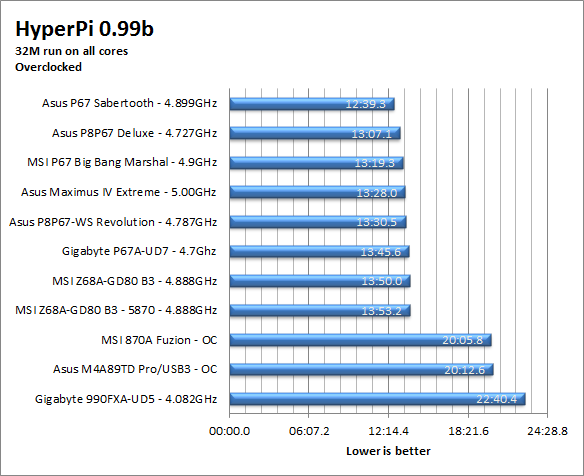
Cinebench R11.5 -
Cinebench R11.5 is the 11th release of Maxon’s rendering test. This test is based off of the Cinema 4D engine, which is one of the industry standard tools for digital animation. It is a powerful product with many different modules that can be “plugged” into it to increase its effectiveness. With Cinebench you get to see how your computer would do using this application. There are two tests; one tests the CPU’s ability to render an image across multiple cores or threads. The other tests your systems ability to handle OpenGL based rendering. 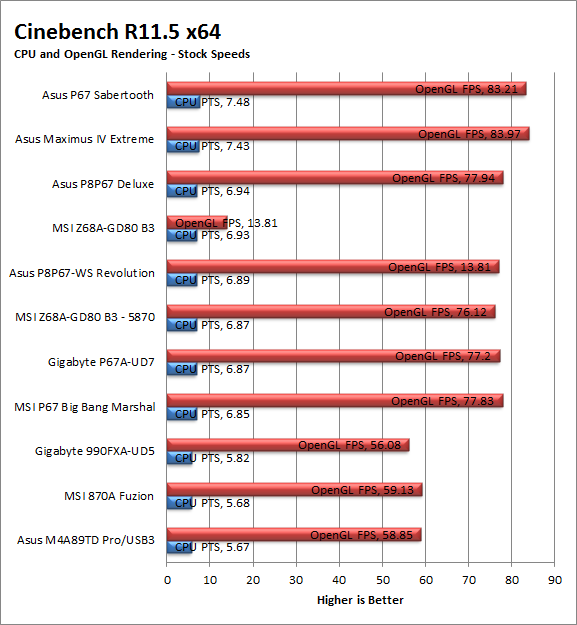
At stock speeds the MIVE does well even though it is a little behind the Sabertooth in terms of points. The lead is only .05, but that can be a big deal when rendering large projects (as you will see in our Laightwave testing). Once we push the CPU to 5GHz on the Maximus things are a little different as you might expect.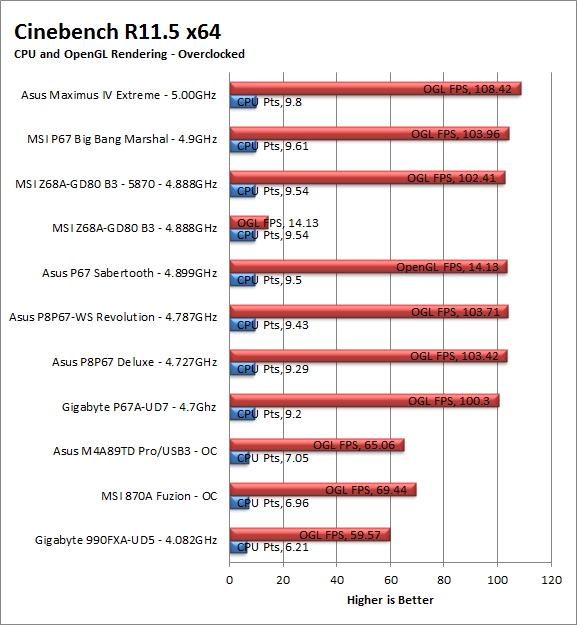

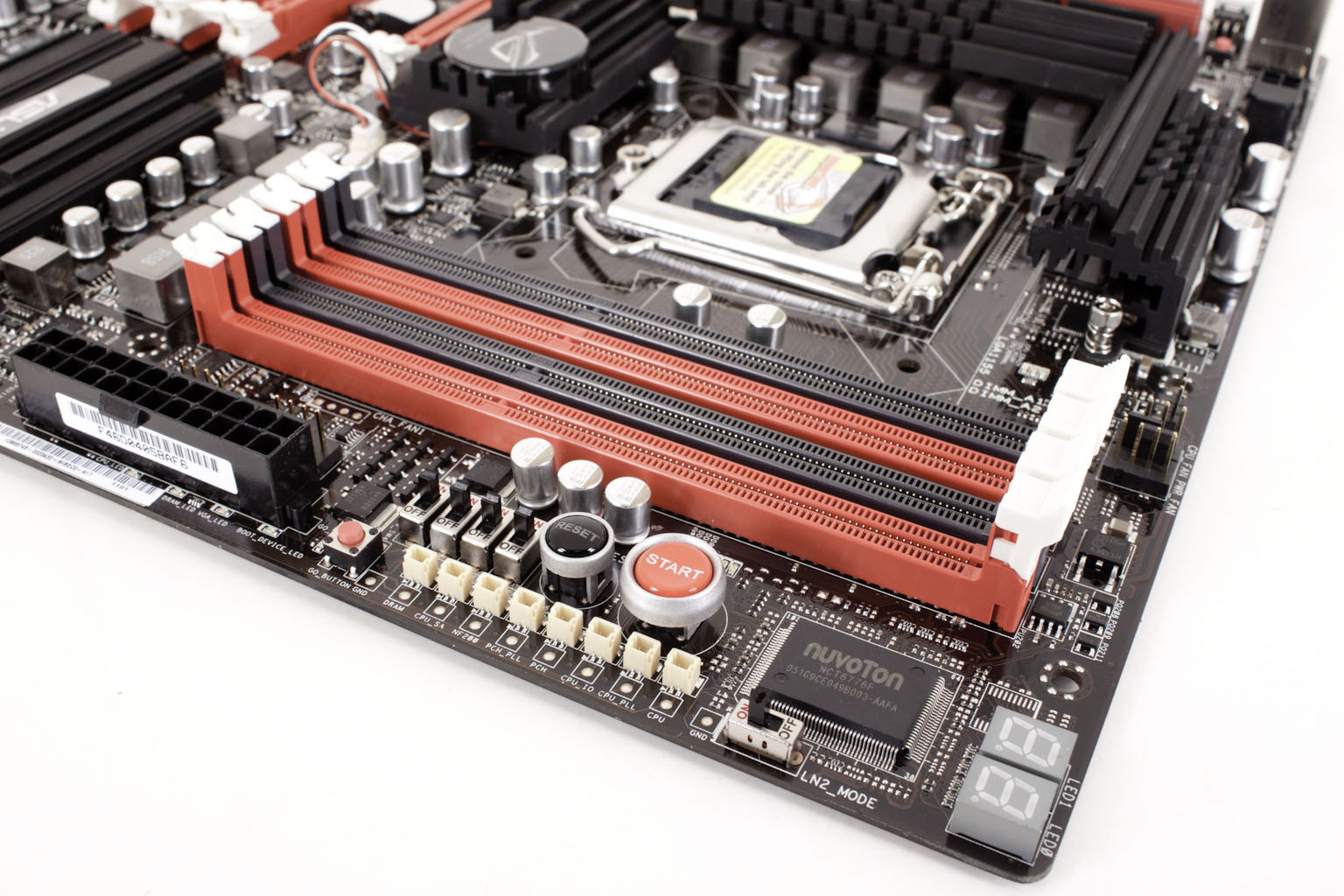 Asus’ Maximus series has always been a great line for the user than demands top notch performance. We have tested them going all the way back to the original Maximus and each one has brought new performance features to the table. As you have seen in our
Asus’ Maximus series has always been a great line for the user than demands top notch performance. We have tested them going all the way back to the original Maximus and each one has brought new performance features to the table. As you have seen in our 

